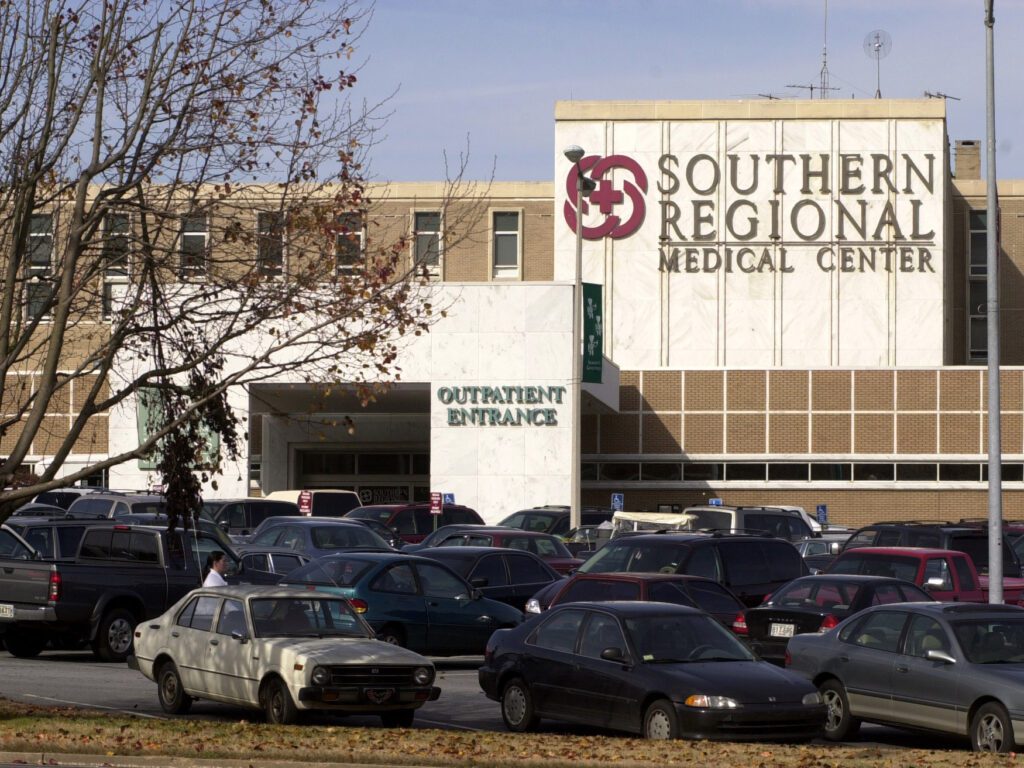
The recent event at Southern Regional Medical Center in Atlanta has sent shockwaves through the medical community and beyond, leading to a lawsuit claiming negligence, fraud, and improper handling of a tragic childbirth incident that shocked Georgia state and the whole nation.
While the legal details continue to unfold, it’s worth taking a moment to reflect on what happened from a professional standpoint, seeking understanding through the lens of a labor and delivery nurse. It’s a complex and sensitive topic, but one that needs careful consideration.
Understanding the Scenario
According to Atlanta News First, the incident in question occurred on July 9 in Southern Regional Medical Center, when a young mother’s delivery led to a severe complication known as shoulder dystocia. This is a rare but critical situation where the baby’s head emerges, but the shoulders become stuck behind the mother’s pubic bone. It requires immediate, decisive action to prevent severe neurological damage or even death.
This situation presents a significant risk, as it can lead to severe neurological damage, or even death, due to oxygen deprivation. The baby’s circulation must shift from relying on the umbilical cord to breathing on its own, a transition that cannot occur if the body is stuck. Further complications may include nerve damage to the baby’s arms or the breaking of the collarbone. For the mother, there are risks of hemorrhaging or tearing as well.
Causes of Shoulder Dystocia
The causes of shoulder dystocia can be multifaceted and are often hard to predict. Factors that may increase the risk include maternal obesity, gestational diabetes, a history of shoulder dystocia in previous births, or a large baby (macrosomia).
Sometimes, medical interventions like induced labor or epidural anesthesia can also contribute to the occurrence of shoulder dystocia. However, it can happen without any known risk factors, making it a particularly challenging complication to manage.
This situation presents a significant risk, as shoulder dystocia can lead to severe neurological damage, or even death, due to oxygen deprivation.

Maneuvers used in case of Shoulder Dystocia
McRoberts Maneuver
The McRoberts maneuver is one of the primary techniques used by healthcare providers and specially trained doctors to address shoulder dystocia. It involves flexing the mother’s legs tightly to her abdomen, which changes the angle of the pelvis and can free the baby’s shoulders.
This non-invasive procedure is often the first step taken when shoulder dystocia is encountered and has a relatively high success rate. The maneuver is typically performed quickly, with the assistance of nurses or other support staff, and requires effective communication and teamwork.
Gaskins Maneuver
If the McRoberts maneuver does not resolve the situation, the Gaskins maneuver might be employed. This technique requires the mother to move onto her hands and knees, which further alters the angle of the pelvis, possibly allowing more room for the baby’s shoulders to pass.
The maneuver may be challenging to perform, especially if the mother has received an epidural, but it can be a crucial step in resolving the complication.
In both maneuvers, timing is of the essence, and the healthcare team must act with precision and coordination. These techniques reflect the complexities of labor and delivery, where unexpected challenges must be met with swift, effective responses. In this case, a vacuum was used unsuccessfully to assist the delivery, followed by an emergency C-section.
Tragically, the actions taken were too late, and excessive force allegedly caused the most unthinkable outcome.
The Nurse’s Perspective
From a nurse’s perspective, handling shoulder dystocia involves rapid maneuvers such as the McRoberts maneuver and the Gaskins maneuver. These techniques aim to change the angle of the pelvis, giving more room to free the baby. Sometimes more aggressive interventions are necessary, such as the intentional breaking of the collarbone to save the baby’s life.
@asknannyq @Jen Hamilton repost thank you for this video 🥹🥹🥹🥹🥹 #asknannyq #jenhamilton ♬ original sound - Nanny Q
Reflecting on the Medical Response
It’s essential to recognize the intense pressure that healthcare providers face in such an emergency. Decisions must be made within minutes, sometimes seconds, with lives hanging in the balance. The assertion that the medical team delayed the C-section and applied excessive force will be a central point of investigation in the lawsuit.
However, without intending to excuse or minimize the catastrophic outcome, it’s worth acknowledging the adrenaline-fueled environment in which these decisions were made. Superhuman strength and aggressive actions can be necessary to save a life, especially in emergency services.
Communication and Transparency
The allegations of the cover-up following the incident are deeply troubling. Transparency, empathy, and open communication are fundamental in healthcare, particularly following an adverse event. The family’s experience, as reported, highlights a severe failure in this area. Their trauma was compounded by the alleged actions of the medical staff, and this aspect of the situation warrants close examination and accountability of cesarean section.
A Critical Lesson for Healthcare
While the legal proceedings continue, it’s incumbent upon the healthcare community to reflect critically on this event and seek to understand how such a tragedy could occur. From a nurse’s perspective, this means reviewing the best methods, reducing unsafe practices, improving training, and enhancing communication with patients and families.
For parents and caregivers, it’s a reminder of the importance of informed consent, understanding medical procedures, and advocating for oneself and one’s family. Trusting medical professionals is essential, but so is being an active participant in one’s care in order to prevent errors.

Conclusion
This tragic incident at Southern Regional Medical Center in Atlanta provides an urgent call to the medical community and the public at large. While the legal case unfolds, it serves as a somber reminder of the complexities and pressures faced by healthcare providers and medical staff and the critical need for transparency in the health system, empathy, and continual improvement in medical practice and patient safety in order to prevent errors like this.
While difficult to discuss, it’s a conversation that must be had, always with respect for those affected and a commitment to ensuring such a tragedy does not happen again.


Leave a Reply